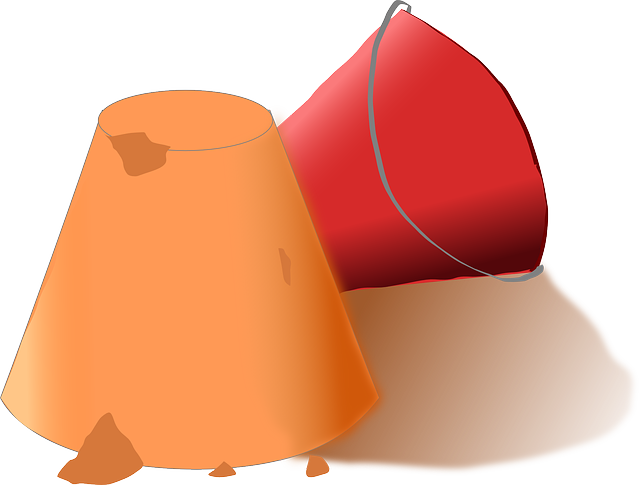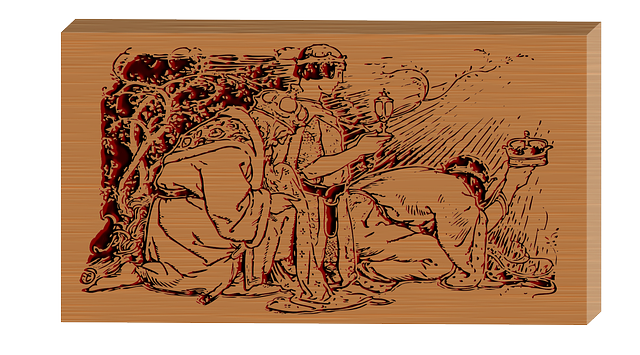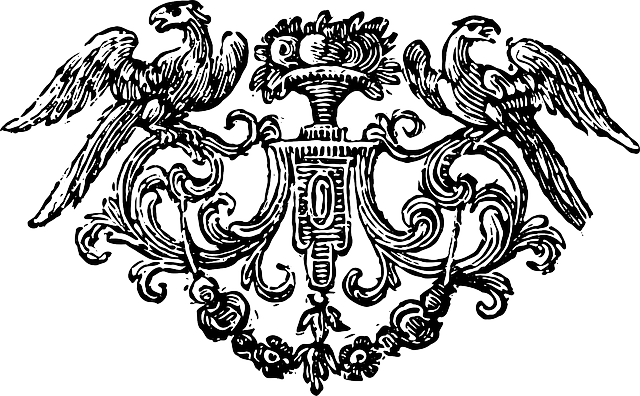اللغة الصينية
| الصينية | |
|---|---|
| 汉语/漢語 Hànyǔ أو中文 Zhōngwén | |
|
Hànyǔ (صينية) مكتوبة بالحروف التقليدية (أعلى)، والمبسطة (وسط) واسم بديل (أسفل)
| |
| موطنها | جمهورية الصين الشعبية وجمهورية الصين (تايوان) وسنغافورة |
| العرق | صينيوالهان |
الناطقون الأصليون |
1٫2 بليون (2004) |
عائلة اللغات |
الصينية-التبتية
|
الصيغ المبكرة |
الصينية القديمة
|
الصيغ الفصحى |
المندرينية الفصحى
الكانتونية الفصحى
|
| اللهجات |
|
نظام الكتابة |
الصينية المبسطة الصينية التقليدية Transcriptions: ژوين پنين (لاتينية) شاورجن (العربية) دونگان (Cyrillic) بريل الصينية 'Phags-pa script (تاريخية) |
| الوضع الرسمي | |
لغة رسمية في |
المندرين:
الكانتونية:
هاكـّا:
|
| ينظمها | National Commission on Language and Script Work (Mainland China) National Languages Committee (Taiwan) Civil Service Bureau (Hong Kong) Promote Mandarin Council (Singapore) Chinese Language Standardisation Council (ماليزيا) |
| أكواد اللغات | |
| ISO 639-1 | zh |
| ISO 639-2 |
chi (B) zho (T)
|
| ISO 639-3 |
zho – inclusive codeIndividual codes: cdo – Min Dong cjy – Jinyu cmn – مندرين cpx – Pu Xian czh – Huizhou czo – Min Zhong gan – گان hak – هاكـّا hsn – شيانگ mnp – مين بـِيْ nan – مين نان wuu – وو yue – يوى och – الصينية القديمة ltc – الصينية الوسطى المتأخرة lzh – الصينية التقليدية |
| Glottolog | sini1245 |
| Linguasphere | 79-AAA |
|
خريطة العالم الناطق بالصينية
المفتاح: ██ بلدان تعترف بالصينية كلغة رئيسية أوإدارية أومحلية ██ بلدان فيها أكثر من 5,000,000 متحدث بالصينية ██ بلدان فيها أكثر من 1,000,000 متحدث بالصينية ██ بلدان فيها أكثر من 500,000 متحدث بالصينية ██ بلدان فيها أكثر من 100,000 متحدث بالصينية ██ المستوطنات الرئيسية الناطقة بالصينية | |
| اللغات الصينية (المحكية) | |||||||||||||||||||||||||||||||||
|---|---|---|---|---|---|---|---|---|---|---|---|---|---|---|---|---|---|---|---|---|---|---|---|---|---|---|---|---|---|---|---|---|---|
| صينية تقليدية | 漢語 | ||||||||||||||||||||||||||||||||
| صينية مبسطة | 汉语 | ||||||||||||||||||||||||||||||||
| المعني الحرفي | لغة الهان | ||||||||||||||||||||||||||||||||
| |||||||||||||||||||||||||||||||||
| Chinese language (Written) | |||||||||||||||||||||||||||||||||
| الصينية | 中文 | ||||||||||||||||||||||||||||||||
| المعنى الحرفي | Middle/Central/Chinese text | ||||||||||||||||||||||||||||||||
| |||||||||||||||||||||||||||||||||
الصينية (汉语/漢語 هانيو، 华语/華語 هوايو، أو中文 جونگون) لغة الصين ولغة الصينيين في نواحي كثيرة من العالم، وهي أكبر لغات العالم، فعدد الناطقين 1.2 مليار. تختلف لهجاتها كثيرة، أكثر من لهجات العربية، فيُعتبر لغات مختلفة. هي من اللغات الصينية التيبتية.
تخط الصينية بنظام كتابة فكرية تسمى "漢字/汉字 هاندزُ"، التي اخترعت قبل 4000 عام. يحتاج التلميذ إلى 6000 حرفا ليقرأ جريدة عادية، وأكثر من ذالك ليقرأ الخط القديمة. في الصين وسنغافورة يستعملون "الحروف المبسطة" التي لها أشكال مبسطة، لكن في هونغ كونغ وتايوان لا يزال يستعملون الحروف التقليدية. تخط أيضا أحيانا بنظام بينيين اللاتيني للتعليم وللأجانب.
اللغة الصينية لا تحتوي علي أبجدية، وإنما تحتوي علي حدثات. فالرمز الواحد تعبير عن حدثة مستقلة. ويخط الرمز من اليسار لليمين، ومن أعلى لأسفل، وما يخالف ذلك يعتبر خطأ.
والقواميس والمعاجم الصينية إنما تعتمد علي نظام عدد الخطوط في الرمز الواحد فتجرد الحدثة من الخطوط الزائدة، وما تبقي بعدئذ تعد خطوطه ويأخذ مكانه في القاموس.
أهم اللهجات (أواللغات) الصينية هي المندارينية، وذالك اللهجة الرسمية. ومن أبرز اللهجات الأخرى الكانتونية والتايوانية والدونگان. كلها لغات نغمية.
اللغة الصينية ولهجاتها
أما إذا عدنا مرة ثانية للحديث عن اللغة الصينية فإننا سنجد أنه بجانب استخدام اللغة الصينية كلغة رسمية في الدول المشار إليها أعلاه فإنه تستخدم أيضًا اللغة الإنجليزية في هونج كونج واللغة البرتغالية في مكاو. وتعتبر اللغة الصينية نظرًا لأعداد المتحدثين بها أكبر لغة يتم التواصل بها في العالم. أما من حيث الأهمية والثقل السياسي والاقتصادي فتحتل اللغة الإنجليزية المرتبة الأولى. وتعتبر اللغة الصينية إحدى اللغات المعترف بها في الأمم المتحدة، ويتنبأ لها الكثيرون بأن تكون واحدة من أبرز اللغات الأجنبية على المستوى الدولي في المستقبل القريب.
وبرغم حتى اللغة الصينية بها لهجات مختلفة وعديدة، إلا حتى جميع الصينيين يتحدثون تقريبًا اللغة الصينية الفصحى، وهي تعبير عن لهجة قياسية (ويطلق عليها Putonghua والتي كانت تسمى في الماضي أيضًا Mandarin). وتقوم هذه اللغة أساسًا على لهجة أهل بكين. وبجانب هذه اللهجة التي أصبحت لغة فصحى تنقسم اللغة الصينية بالعمل إلى سلسلة من اللهجات، والتي يمكن تقسيمها بشكل أولي إلى لهجات شمال الصين ولهجات جنوب الصين. وتقترب لهجات جنوب الصين من اللغة الصينية الكلاسيكية، أما لهجات شمال الصين فتقترب من اللغة الصينية المعاصرة.
وتختلف اللهجات الصينية فيما بينها اختلافًا كبيرًا في طريقة نطقها (الأصوات) وفي بنيتها النحوية (القواعد) وفي مفرداتها (الثروة اللغوية)، لدرجة حتى التواصل الشفوي بين متحدث إحدى اللهجات الموجودة في شمال الصين سيجد صعوبة بالغة أولن يتمكن على الإطلاق من إجراء محادثة شفوية مع أحد متحدثي لهجة جنوب الصين، وعليهم في هذه الحالة إما حتى يلجؤوا للغة المكتوبة أوللغة الصينية الفصحى (Putonghua) لكي يتفاهموا ويتواصلوا مع بعضهم. ومن اللافت للنظر حتى متحدثي أي لهجة صينية يقدر أعدادهم بالملايين، فلهجة ووالتي يتم التحدث بها في مناحي شنغهاي يبلغ عدد المتحدثين بها أكثر من 77 مليون نسمة، وهورقم يزيد على متحدثي اللغة الإيطالية (حوالي 70 مليونًا) أوالهولندية (حوالي 25 مليونًا). وبهذا القياس والمقارنة مع كثير من اللغات الأوربية فيمكننا حتى نعتبر حتى أي لهجة صينية كبرى يجب النظر إليها على أنها لغة قائمة بذاتها وليست لهجة من اللهجات.
ويوجد في اللغة الصينية عدد مختلف من المصطلحات للإشارة للغة الصينية. فهناك المصطلح «تشونجوين»، وهومصطلح عام للغة الصينية، ويشير في المقام الأول للغة المستخدمة في الكتابة. ولأن لغة الكتابة هي لغة مستقلة بشكل أوبآخر عن اللهجة، فإن هذا المصطلح يضم أيضًا معظم اللهجات الصينية. أما مصطلح «هان يو» فيطلق على اللغة المنطوقة، وتلك هي اللغة المقصودة عندما يريد المرء حتى يقول: «أنا أتحدث اللغة الصينية». كما يطلق المصطلح «هان»- والذي يشير في الأساس «لقومية أهل هان» – على جميع اللهجات التي يتحدث بها الصينيون من قومية هان. أما في اللغة العامية فيستخدم المرء المصطلح «هان يو» للدلالة على الانتساب للغة الصينية الفصحى. وبالنسبة للغة الصينية الفصحى يوجد مصطلح خاص يطلق عليها وهوPutonghua .
وغالبًا ما ينظر المرء للغات الصينية المتنوعة، وكما تجاوز ذكره عاليه، على أنها لهجات، على الرغم حتى متحدثي اللغات الصينية المتنوعة لا يمكنهم التفاهم بهذه اللغات المتنوعة, والتي تنتشر جميع واحدة منها في منطقة معينة. ويضاف إلى ذلك حتى جميع من هذه اللغات تنقسم أيضًا إلى لهجات. ولكن التعايش في دولة واحدة ووجود كتابة مشهجرة بالإضافة للغة الفصحى (التي يمكن حتى ينظر إليها أيضًا على أنها لهجة يتحدث بها العدد الأكبر من سكان الصين كما ذكرنا) هي التي تجعل التواصل ممكنًا بين أبناء اللغات الصينية المتنوعة. وفي هذا السياق نجد حتى فهم اللغة لا يتحدث عن لهجات صينية وإنما عن لغات صينية مختلفة وينظر للغة الصينية على أنها تعبير عن مجموعة من اللغات المتنوعة وتشتمل على ست لغات مختلفة على الأقل.
وتعد اللهجة الشمالية «بايفنجهوا» هي الأكثر انتشارًا ويتحدث بها ما لا يقل عن 850 مليون نسمة وتقوم على أساسها اللغة الصينية الفصحى. ومن أبرز اللغات الصينية الأخرى:
- لغة (Gan) ويتحدث بها 20 مليون نسمة.
- لغة (Hakka) ويتحدث بها 30 مليون نسمة.
- لغة (Jin) ويتحدث بها 45 مليون نسمة.
- لغة (Min Bei) ويتحدث بهاعشرة ملايين نسمة.
- لغة (Min Nan) ويتحدث بها 40 مليون نسمة. ومن بينها اللغة التايوانية (Taiwanisch) ويتحدث بها 15 مليون نسمة.
- لغة (Wu) ويتحدث بها 77 مليون نسمة.
- لغة (Xiang) ويتحدث بها 36 مليون نسمة.
- لغة (Yue) ويتحدث بها أكثر من 80 مليون نسمة.
ومما هوجدير بالذكر في هذا السياق حتى هناك عددًا من اللغات التي تتحدث بها طوائف مختلفة من الشعب الصيني مثل اللغة المنغولية واللغة التبتية واللغة المنشورية لا تنتمي للغات الصينية.
خصائص اللغة الصينية
من خصائص اللغة الصينية حتى جميع مفرداتها تتكون من مبتر واحد، وبالطبع هناك استثناءات قليلة جدًا لهذه القاعدة التي تتميز بها اللغة الصينية. والاستثناءات الموجودة في اللغة الصينية تتمثل في حالتين: فهي إما حتى تكون تكرارًا لنفس المبتر أوتكون مقاطع صوتية مقلدة لحدث، مثال ذلك KO-KO (بمعنى أخ)، أوHA-HA (قهقهة). وتتميز اللغة الإنجليزية عن بقية اللغات الأوربية بتشابهها وتقاربها إلى حد كبير مع اللغة الصينية. فمن الممكن حتى يخط المرء مقاطع كاملة، بل نصوصًا أيضًا من حدثات ذات مبتر واحد كما في الصينية. وليس هذا هوالتقارب الوحيد بين الإنجليزية والصينية: فنحن نعهد أنه على مدار 1000 عام مضت تقلصت فيها النهايات التي تضاف للحدثات في اللغة الإنجليزية، وبدأت إنجليزية تقوم على مفردات لا تتغير أشكالها. وهذه العملية لم تنته بعد في التخلص الكامل من النهايات في اللغة الإنجليزية أوبقاء المفردات على شاكلة واحدة دون تغيير صرفي لها، مثال: sing - sang أوfoot-feet . أما الألمانية فلا زال الاشتقاق والإمالة فيها من العوامل المساعدة والفعالة والمستمرة في تغيير أشكال مفرداتها. ولا يزال المرء يضع حرف «s» في نهاية الحدثة المفردة في اللغة الإنجليزية للدلالة على الجمع، ويضع –s, ed-, ing للعمل، كما يضع –er, -est للاسم. ومن المتسقط حتى تخطوالإنجليزية خطوة أخرى مع الوقت للحاق والتقارب مع الصينية في هذا الشأن. فالحدثة الصينية مثل النطقب الذي لا يتبدل مع وجود بعض استثناءات قليلة جدًا. فالمفردة لا تعهد التصريف ولها فقط لواحق قليلة جدًا. ويمكننا حتى نقول هنا باختصار إذا شكل المفردة الصينية لا يجعلنا نعهد من خلاله إذا كان اسمًا أوعملاً أوصفة أوجمادًا أوإنسانًا.
ولذلك فإنه من خواص اللغة الصينية حتى نجد حتى نفس الحدثة يمكن استخدامها في وظائف عديدة. ومن نافلة القول حتى نذكر هنا حتى تقسيم مفردات اللغة الصينية إلى فصائل (كالاسم والعمل والصفة والضمير إلخ.) كما في اللغات الأوروبية مثلاً لا معنى له. فحدثة SHANG الصينية تعنى الأعلى أوالسيد، وهي بالتالي هنا لها وظيفة الاسم. وإذا ما اتىت في السياق التالي SHANG PIEN بمعنى الناحية العليا فإنها تؤدي وظيفة الصفة. وفي المثال التالي SHANG MA بمعنى يمتطي الحصان فإنها تلعب دور العمل. أما في العبارة MA SHANG فإنها تؤدي وظيفة حرف الجر.
على أنه يمكننا القول إذا السياق والحدثات المحيطة بالحدثة وترتيبها هوالذي يجعلنا نقرر إذا كانت الحدثة اسمًا أوعملاً أوصفة أوحرف جر كما في المثالين SHANG MA وMA SHANG. وهذا الكلام ينطبق فقط على لغة الكتابة. أما لغة التحدث فلها لواحق مختلفة، تجعل من الحدثة اسمًا بكل وضوح. فمن الممكن حتى تدخل اللاحقة TZU، وهي حدثة تأتي في السياق الأدبي بمعنى ابن أوصبي كمبتر اشتقاقي بلا نبر (وينطق ds). وبذلك تنشأ حدثات تشير بوضوح على أنها أسماء كما في الأمثلة التالية: I-TZU (بمعنى كرسي فوتيه) وTU-TZU (بمعنى بطن). وهناك مبتر آخر في لهجة بكين وهوERH والذي يعني إذا اتى مستقلاً «صبي»، أما إذا اتى كلاحقة بدون نبر فإنه يشير على التصغير.
وفي اللغة الصينية لا نجد أي أثر للتذكير والتأنيث، فالضمير T´A يشير بشكله هذا ودون تغيير للمذكر والمؤنث. كما حتى شكل الحدثة وحده لا ينبيء إذا كانت الحدثة مفردة أوجمعًا، وبالتالي يمكن حتىقد يكون معنى الحدثة الآتية HO «نهر» أو«أنهار» وفقًا للسياق. وللإشارة على الكلية يلجأ الصيني للطريق القديمة المنتشرة وهي التكرار، وأحيانًا تضاف اللاحقة MEN للدلالة على الجمع في الضمائر، كما في الأمثلة التالية:
- WO أنا، ني Wo-MEN نحن، نا
- NI أنت، ك NI-MEN أنتم، كم
- T´A هو، ـه، هي، ها T´A-MEN هم، هن
وكما في الاسم فإننا لا نجد أثرًا للعلامات الإعرابية في الضمائر.
كما أنه ليس من العجب ألا نجد أشكالاً مختلفة للعمل للتعبير عن المفرد والجمع والزمن والمبني للمعلوم والمبني للمجهول. ومن الطبيعي حتى نؤكد هنا على القول إذا ترتيب الحدثات في اللغة الصينية له قواعد صارمة نظرًا لغياب التصريف فيها.
التنويعات
Jerry Norman estimated that there are hundreds of mutually unintelligible varieties of Chinese. These varieties form a dialect continuum, in which differences in speech generally become more pronounced as distances increase, though the rate of change varies immensely. Generally, mountainous South China exhibits more linguistic diversity than the North China Plain. In parts of South China, a major city's dialect may only be marginally intelligible to close neighbors. For instance, Wuzhou is about 120 ميلs (190 kم) upstream from Guangzhou, but the Yue variety spoken there is more like that of Guangzhou than is that of Taishan, 60 ميلs (95 kم) southwest of Guangzhou and separated from it by several rivers. In parts of Fujian the speech of neighboring counties or even villages may be mutually unintelligible.
Until the late 20th century, Chinese emigrants to Southeast Asia and North America came from southeast coastal areas, where Min, Hakka, and Yue dialects are spoken. The vast majority of Chinese immigrants to North America spoke the Taishan dialect, from a small coastal area southwest of Guangzhou.
التجميع
Local varieties of Chinese are conventionally classified into seven dialect groups, largely on the basis of the different evolution of Middle Chinese voiced initials:
- المندرين، including Standard Chinese, Pekinese, Sichuanese, and also the Dungan language المحكية في آسيا الوسطى
- وو، وتضم Shanghainese, Suzhounese وWenzhounese
- گان
- شيانگ
- مين، وتضم لهجة فوژووالهاينانية والهوكين، التايوانية وتيوتشـِوْ
- هاكا
- يوى، تتضمن الكانتونية والتايشانية
تبويب Li Rong, which is used in the Language Atlas of China (1987), distinguishes three further groups:
- Jin, previously included in Mandarin.
- Huizhou, previously included in Wu.
- Pinghua, previously included in Yue.
Numbers of first-language speakers in China and Taiwan in 2004:
- Mandarin: 798٫6 million (66.2%)
- Jin: 63 million (5.2%)
- Wu: 73٫8 million (6.1%)
- Huizhou: 3٫3 million (0.3%)
- Gan: 48 million (4.0%)
- Xiang: 36٫4 million (3.0%)
- Min: 75 million (6.2%)
- Hakka: 42٫2 million (3.5%)
- Yue: 58٫8 million (4.9%)
- Pinghua: 7٫8 million (0.6%)
Some varieties remain unclassified, including Danzhou dialect (spoken in Danzhou, on Hainan Island), Waxianghua (spoken in western Hunan) and Shaozhou Tuhua (spoken in northern Guangdong).
الصينية الفصحى
الصينية الفصحى, often called Mandarin, is the official standard language of China and Taiwan, and one of the four official languages of Singapore (where it is called "Huayu" 华语 or simply Chinese). Standard Chinese is based on the Beijing dialect, the dialect of Mandarin as spoken in Beijing. The governments of both China and Taiwan intend for speakers of all Chinese speech varieties to use it as a common language of communication. Therefore, it is used in government agencies, in the media, and as a language of instruction in schools.
In mainland China and Taiwan, diglossia has been a common feature. For example, in addition to Standard Chinese, a resident of Shanghai might speak Shanghainese; and, if he or she grew up elsewhere, then he or she is also likely to be fluent in the particular dialect of that local area. A native of Guangzhou may speak both Cantonese and Standard Chinese. In addition to Mandarin, most Taiwanese also speak Minnan, Hakka, or an Austronesian language. A Taiwanese may commonly mix pronunciations, phrases, and words from Mandarin and other Taiwanese languages, and this mixture is considered normal in daily or informal speech.
Nomenclature
The official Chinese designation for the major branches of Chinese is fāngyán (方言, literally "regional speech"), whereas the more closely related varieties within these are called dìdiǎn fāngyán (地点方言/地點方言 "local speech"). Conventional English-language usage in Chinese linguistics is to use dialect for the speech of a particular place (regardless of status) and dialect group for a regional grouping such as Mandarin or Wu. Because varieties from different groups are not mutually intelligible, some scholars prefer to describe Wu and others as separate languages.[]Jerry Norman called this practice misleading, pointing out that Wu, which itself contains many mutually unintelligible varieties, could not be properly called a single language under the same criterion, and that the same is true for each of the other groups.
Mutual intelligibility is considered by some linguists to be the main criterion for determining whether varieties are separate languages or dialects of a single language, although others do not regard it as decisive, particularly when cultural factors interfere as they do with Chinese. As Campbell (2008) explains, linguists often ignore mutual intelligibility when varieties share intelligibility with a central variety (i.e. prestige variety, such as Standard Mandarin), as the issue requires some careful handling when mutual intelligibility is inconsistent with language identity.John DeFrancis argues that it is inappropriate to refer to Mandarin, Wu and so on as "dialects" because the mutual unintelligibility between them is too great. On the other hand, he also objects to considering them as separate languages, as it incorrectly implies a set of disruptive "religious, economic, political, and other differences" between speakers that exist, for example, between French Catholics and English Protestants in Canada, but not between speakers of Cantonese and Mandarin in China, owing to China's near-uninterrupted history of centralized government.
Because of the difficulties involved in determining the difference between language and dialect, other terms have been proposed: ISO 639-3 follows Ethnologue in assigning individual language codes to the 13 main subdivisions, while Chinese as a whole is classified as a 'macrolanguage'. Other options include vernacular,lect regionalect,topolect, and variety.
Most Chinese people consider the spoken varieties as one single language because speakers share a common culture and history, as well as a shared national identity and a common written form. To Chinese nationalists, the idea of Chinese as a language family may suggest that the Chinese identity is much more fragmented and disunified than it actually is and as such is often looked upon as culturally and politically provocative. Additionally, in Taiwan it is closely associated with Taiwanese independence,[] some of whose supporters promote the local Taiwanese Hokkien variety.
نظام الكتابة
The Chinese orthography centers on Chinese characters, which are written within imaginary square blocks, traditionally arranged in vertical columns, read from top to bottom down a column, and right to left across columns. Chinese characters denote morphemes independent of phonetic change. Thus the character 一 ("one") is uttered yī in Standard Chinese, yat1 in Cantonese and it in Hokkien (form of Min). Vocabularies from different major Chinese variants have diverged, and colloquial nonstandard written Chinese often makes use of unique "dialectal characters", such as 冇 and 係 for Cantonese and Hakka, which are considered archaic or unused in standard written Chinese.
Written colloquial Cantonese has become quite popular in online chat rooms and instant messaging amongst Hong-Kongers and Cantonese-speakers elsewhere. It is considered highly informal, and does not extend to many formal occasions.
The Chinese had no uniform phonetic transcription system until the mid-20th century, although enunciation patterns were recorded in early rime books and dictionaries. Early Indian translators, working in Sanskrit and Pali, were the first to attempt to describe the sounds and enunciation patterns of Chinese in a foreign language. After the 15th century, the efforts of Jesuits and Western court missionaries resulted in some rudimentary Latin transcription systems, based on the Nanjing Mandarin dialect.
In Hunan, women in certain areas write their local language in Nü Shu, a syllabary derived from Chinese characters. The Dungan language, considered by many a dialect of Mandarin, is nowadays written in Cyrillic, and was previously written in the Arabic script. The Dungan people are primarily Muslim and live mainly in Kazakhstan, Kyrgyzstan, and Russia; some of the related Hui people also speak the language and live mainly in China.
الحروف الصينية
Each Chinese character represents a monosyllabic Chinese word or morpheme. In 100 CE, the famed Han dynasty scholar Xu Shen classified characters into six categories, namely pictographs, simple ideographs, compound ideographs, phonetic loans, phonetic compounds and derivative characters. Of these, only 4% were categorized as pictographs, including many of the simplest characters, such as rén 人 (human), rì 日 (sun), shān 山 (mountain; hill), shuǐ 水 (water). Between 80% and 90% were classified as phonetic compounds such as chōng 沖 (pour), combining a phonetic component zhōng 中 (middle) with a semantic radical 氵 (water). Almost all characters created since have been made using this format. The 18th-century Kangxi Dictionary recognized 214 radicals.
Modern characters are styled after the regular script. Various other written styles are also used in Chinese calligraphy, including seal script, cursive script and clerical script. Calligraphy artists can write in traditional and simplified characters, but they tend to use traditional characters for traditional art.
There are currently two systems for Chinese characters. The traditional system, still used in Hong Kong, Taiwan, Macau and Chinese speaking communities (except Singapore and Malaysia) outside mainland China, takes its form from standardized character forms dating back to the late Han dynasty. The Simplified Chinese character system, introduced by the People's Republic of China in 1954 to promote mass literacy, simplifies most complex traditional glyphs to fewer strokes, many to common cursive shorthand variants.
Singapore, which has a large Chinese community, was the second nation to officially adopt simplified characters, although it has also become the de facto standard for younger ethnic Chinese in Malaysia. The Internet provides the platform to practice reading these alternative systems, be it traditional or simplified.
A well-educated Chinese reader today recognizes approximately 4,000 to 6,000 characters; approximately 3,000 characters are required to read a Mainland newspaper. The PRC government defines literacy amongst workers as a knowledge of 2,000 characters, though this would be only functional literacy. School-children typically learn around 2,000 characters whereas scholars may memorize up to 10,000. A large unabridged dictionary, like the Kangxi Dictionary, contains over 40,000 characters, including obscure, variant, rare, and archaic characters; fewer than a quarter of these characters are now commonly used.
Romanization
Romanization is the process of transcribing a language into the Latin script. There are many systems of romanization for the Chinese varieties, due to the lack of a native phonetic transcription until modern times. Chinese is first known to have been written in Latin characters by Western Christian missionaries in the 16th century.
Today the most common romanization standard for Standard Chinese is Hanyu Pinyin, often known simply as pinyin, introduced in 1956 by the People's Republic of China, and later adopted by Singapore and Taiwan. Pinyin is almost universally employed now for teaching standard spoken Chinese in schools and universities across America, Australia and Europe. Chinese parents also use Pinyin to teach their children the sounds and tones of new words. In school books that teach Chinese, the Pinyin romanization is often shown below a picture of the thing the word represents, with the Chinese character alongside.
The second-most common romanization system, the Wade–Giles, was invented by Thomas Wade in 1859 and modified by Herbert Giles in 1892. As this system approximates the phonology of Mandarin Chinese into English consonants and vowels, i.e. it is an Anglicization, it may be particularly helpful for beginner Chinese speakers of an English-speaking background. Wade–Giles was found in academic use in the الولايات المتحدة, particularly before the 1980s, and until recently[] was widely used in Taiwan.
When used within European texts, the tone transcriptions in both pinyin and Wade–Giles are often left out for simplicity; Wade–Giles' extensive use of apostrophes is also usually omitted. Thus, most Western readers will be much more familiar with Beijing than they will be with Běijīng (pinyin), and with Taipei than T'ai²-pei³ (Wade–Giles). This simplification presents syllables as homophones which really are none, and therefore exaggerates the number of homophones almost by a factor of four.
Here are a few examples of Hanyu Pinyin and Wade–Giles, for comparison:
| Characters | Wade–Giles | Hanyu Pinyin | Meaning/Notes |
|---|---|---|---|
| 中国/中國 | Chung¹-kuo² | Zhōngguó | China |
| 台湾/臺灣 | T'ai²-wan¹ | Táiwān | Taiwan, officially known as the Republic of China |
| 北京 | Pei³-ching¹ | Běijīng | Beijing, the Capital of the People's Republic of China |
| 台北/臺北 | T'ai²-pei³ | Táiběi | Taipei, the Capital of the Republic of China (Taiwan) |
| 毛泽东/毛澤東 | Mao² Tse²-tung¹ | Máo Zédōng | Former Communist Chinese leader |
| 蒋介石/蔣介石 | Chiang³ Chieh⁴-shih² | Jiǎng Jièshí | Former Nationalist Chinese leader (better known to English speakers as Chiang Kai-shek, with Cantonese pronunciation) |
| 孔子 | K'ung³ Tsu³ | Kǒngzǐ | Confucius |
Other systems of romanization for Chinese include Gwoyeu Romatzyh, the French EFEO, the Yale (invented during WWII for U.S. troops), as well as separate systems for Cantonese, Min Nan, Hakka, and other Chinese varieties.
Other phonetic transcriptions
Chinese varieties have been phonetically transcribed into many other writing systems over the centuries. The 'Phags-pa script, for example, has been very helpful in reconstructing the pronunciations of premodern forms of Chinese.
Zhuyin (colloquially bopomofo), a semi-syllabary is still widely used in Taiwan's elementary schools to aid standard pronunciation. Although zhuyin characters are reminiscent of katakana script, there is no source to substantiate the claim that Katakana was the basis for the zhuyin system. A comparison table of zhuyin to pinyin exists in the zhuyin article. Syllables based on pinyin and zhuyin can also be compared by looking at the following articles:
- Pinyin table
- Zhuyin table
There are also at least two systems of cyrillization for Chinese. The most widespread is the Palladius system.
شاورجن - الصينية بحروف عربية
شاورجن (شاو-إر-جن) هي نظام لكتابة الصينية بحروف عربية، طوره المسلمون الصينيون (هوي) في مدارسهم الدينية في القرن السادس عشر، ومازالت مستعملة حتى الآن في لكافة أغراض الحياة.
للمزيد من التفاصيل، انظر: شاوإر جن
انظر أيضاً
- Chinese exclamative particles
- Chinese honorifics
- Chinese numerals
- Chinese punctuation
- Classical Chinese grammar
- Four-character idiom
- Han unification
- Languages of China
- North American Conference on Chinese Linguistics
مواقع أخرى
- تفهم الصينية بالعربية
- Learn Chinese دروس مجانية في اللغة الصينية في 15 وحدة. تتألف جميع وحدة من حوارات سهلة الفهم وصفحة للتمارين.
- Chinese-English dictionary قاموس صيني-إنجليزي يحتوي أكثر من 34.000 حدثة. يمكن البحث فيه بالحروف الصينية أوالكتابة الصوتية أوالإنجليزية. توجد أيضا ملفات صوتية.
tokipona:toki Sonko
- ^ Chinese Academy of Social Sciences (2012), p. 3.
- ^ china-language.gov.cn (صينية)
- ^ Norman (2003), p. 72.
- ^ Norman (1988), pp. 189–190.
- ^ Ramsey (1987), p. 23.
- ^ Norman (1988), p. 188.
- ^ Norman (1988), p. 191.
- ^ Ramsey (1987), p. 98.
- ^ Norman (1988), p. 181.
- ^ Kurpaska (2010), pp. 53–55.
- ^ Wurm et al. (1987).
- ^ Kurpaska (2010), pp. 55–56.
- ^ Kurpaska (2010), pp. 72–73.
- ^ Klöter, Henning (2004). "Language Policy in the KMT and DPP eras". China Perspectives. 56. ISSN 1996-4617. Retrieved 30 May 2015.
- ^ Kuo, Yun-Hsuan (2005). (PhD). University of Essex. Retrieved 26 June 2015.
- ^ DeFrancis (1984), p. 57.
- ^ Thomason (1988), pp. 27–28.
- ^ Mair (1991), p. 17.
- ^ DeFrancis (1984), p. 54.
- ^ Romaine (2000), pp. 13, 23.
- ^ Wardaugh & Fuller (2014), pp. 28–32.
- ^ Liang (2014), pp. 11–14.
- ^ Hymes (1971), p. 64.
- ^ Thomason (1988), p. 27.
- ^ Campbell (2008), p. 637.
- ^ DeFrancis (1984), pp. 55–57.
- ^ Lewis, Simons & Fennig (2015).
- ^ Haugen (1966), p. 927.
- ^ Bailey (1973:11), cited in Groves (2008:1)
- ^ Mair (1991), p. 7.
- ^ Hudson (1996), p. 22.
- ^ Baxter (1992), p. 7–8.
- ^ Zimmermann, Basile (2010). "Redesigning Culture: Chinese Characters in Alphabet-Encoded Networks". Design and Culture. 2 (1).

















